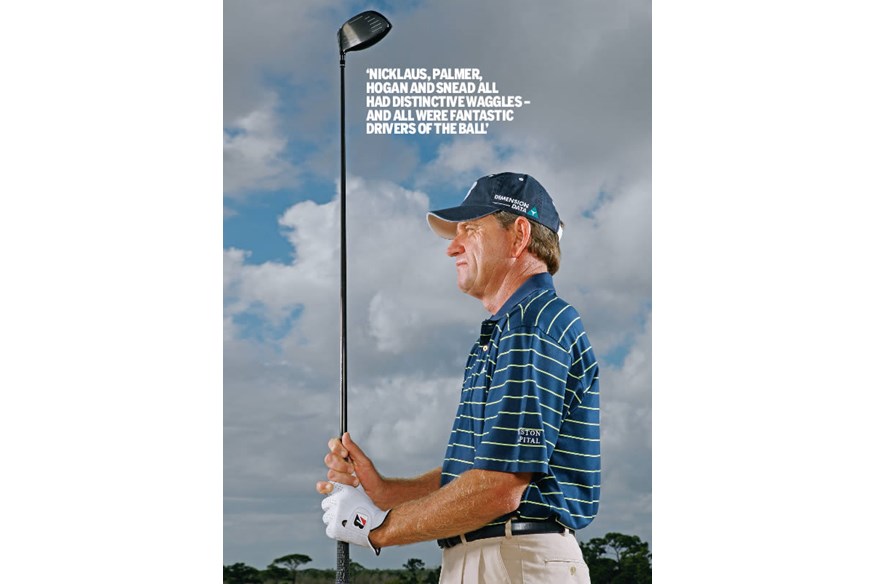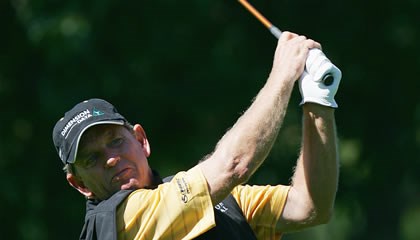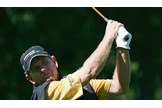Nick Price: My 10 Rules For Being A Great Driver
Last updated:
The former Open champion on how to be long and straight off the tee – every time.
1 Distance first, accuracy later
Nick Faldo, Fred Couples, Greg Norman and others of my generation had a different outlook on hitting the driver than players do today. The threshold between power and control back then was so delicate. I couldn’t swing at more than about 85 percent without losing the ability to consistently hit the sweet spot, which on persimmon drivers was the size of a pea. Drivers today have sweet spots larger than the ball itself, but I’ve had a hard time taking advantage of that because swinging recklessly runs so contrary to the way I played. That isn’t true with the current generation of pros. On average, I’ll bet they swing at more than 90 percent, and though they aren’t especially straight, they hit the ball so far it often doesn’t matter. If you’re a beginner or are starting a kid in golf, make it a key to hit the driver as far as possible. Swing it longer and more free-wheeling than the irons. You can address control issues later.
2 Now more than ever, hit a draw
A growing number of tour players are choosing to fade the ball with their drivers. If this makes you feel better about that slice you’ve been cursed with, you need to think again. Tour players don’t fade the ball the way amateurs do. They actually make a draw-type swing, with the clubhead approaching from inside the line of play instead of swiping across it. All they do to produce the fade is aim left and make sure the face is open slightly at impact. To become a good driver, you have to make that draw-type swing. It’s more powerful, because the clubhead comes into impact on a shallow, head-on angle, and you compress the ball more efficiently.
3 Tee the ball farther forward
If there was a watershed year when drivers really got hot, it was 2004. At the Masters that year, a lot of young players suddenly were pounding it past me. On the par-5 15th hole I was hitting a 4-iron for my second shot, while guys like Tiger and Sergio were hitting 7-irons. You can’t give up that kind of distance over 72 holes. I tied for sixth and was left to wonder what might have happened if I could’ve kept up with them. In my search for more yards, I found two things that worked. First, I increased my backswing turn. Second, I began playing the ball farther forward, directly below my left pectoral muscle. With drivers going from 43 to 45 inches, they’re built to be played with the ball forward. Tee the ball a little higher, and move it up an inch or two. You’ll catch it on the upswing for a longer carry and more roll—the best of both worlds.
4 Test-drive 10 ‘identical’ drivers
The great Japanese player Jumbo Ozaki, known for being an independent thinker, started a trend some years ago that many pros follow today. Because the technology that’s used to make titanium drivers is relatively new, not every driver is exactly alike. When the titanium faces are spot-welded onto the clubhead, the depth of the welds varies ever so slightly. A thinner weld means a greater trampoline effect at impact, and that means more distance. Plus, small variances in shaft flex and loft can have an impact. Jumbo would try maybe 20 drivers, all exactly the same according to the specs on the club. But one or two would be hotter than the rest. They were conforming, but every club was slightly different. If you’ve been fit with, say, an 11-degree with a regular shaft and you like a particular brand, try to hit 10 or more models of that club. You might find that one magically produces more yards.
5 Trajectory: The final third is critical
The best driver I ever saw was Greg Norman. When Greg and I first played together in the late 1970s, his standard ball flight was a slight up-shooter, his ball behaving like a rising line drive. It would hang at the peak of its trajectory and then fall out of the sky. Greg was a straight driver and long enough, but he gave the impression he wasn’t getting a full payoff for that great swing. Then, at some point in the mid-1980s, Greg figured it out. Through a combination of finding the right driver and hitting the ball more on the upswing, he began launching it much higher. Moreover, when it reached the high point of its flight, it continued to fly forward rather than fluttering down like a wounded duck. And it ran after it hit the ground. By improving the final one-third of his ball flight, Greg became super long, with no loss of accuracy. When you hit your driver on the range, watch how the ball behaves toward the end of its flight. If you notice it’s falling abruptly from its peak, find a driver that launches it higher with less spin. The reward will probably be 15 yards, maybe more.

6 Don’t let a straight drive hurt you
One school of thought is to aim for one side of the fairway or the other, and let your natural curve bring the ball back to the center. The other philosophy is to aim down the middle, and give yourself a margin for error on both sides. On the whole, the second philosophy is better, especially in this day and age when rainbow slices and duck-hooks are much harder to hit. The rule is to never aim so you’re starting the ball toward trouble—a bunker, water hazard, deep rough—because if the ball goes straight, you’ve got a problem. Never let yourself be penalized for hitting it straight.
7 Be a no-risk gambler
We’re all tempted to try to carry that distant bunker, boom one over the corner of a dogleg or make a par 5 reachable by flying water off the tee. But the rule I’ve always followed goes like this: If you can’t carry the trouble with your normal swing, don’t go for it. If you feel you have to swing even a little harder, lay up or aim away from the trouble. If you gamble and lose, you’ll cost yourself a stroke or more, and you’ll also feel foolish and fall into a bad frame of mind.
8 Give yourself a good lie on the tee
Most tee boxes are imperfect. Over time they start to slope in one direction, and many have a hollow or two. If you tee up in a place where your feet are even half an inch higher or lower than the ball, you have a sidehill lie. Find a level area at all cost, even if it means teeing up right next to one of the markers or moving back a club-length or two.
9 Know the cause of bad driving days
When I go to the range before a round, I’m never sure whether my shot shape will be a slight draw or a straight shot. If you want to avoid “bad driving days,” where you hit the ball all over the place, pay closer attention to what you showed on the range. On the course, plan and execute your tee shots based on your tendencies that day. Your misses will be more manageable, and you’ll avoid a lot of stress. You’ll at least be able to get the ball around the course.
10 Buck the trend: Use a waggle
If there’s a trend on tour I hope doesn’t trickle down to the grass-roots level, it’s a preference for not waggling at address. Tiger and Phil have only tiny waggles, Aaron Baddeley has none at all, and more players are swinging from a static start. The waggle is more than just window dressing. It’s crucial, because it relieves tension. It establishes a sense of rhythm and acts as a preview of the swing to follow. Jack Nicklaus, Arnold Palmer, Ben Hogan and Sam Snead had distinct waggles, and all were fantastic drivers of the ball.
© GOLF DIGEST


